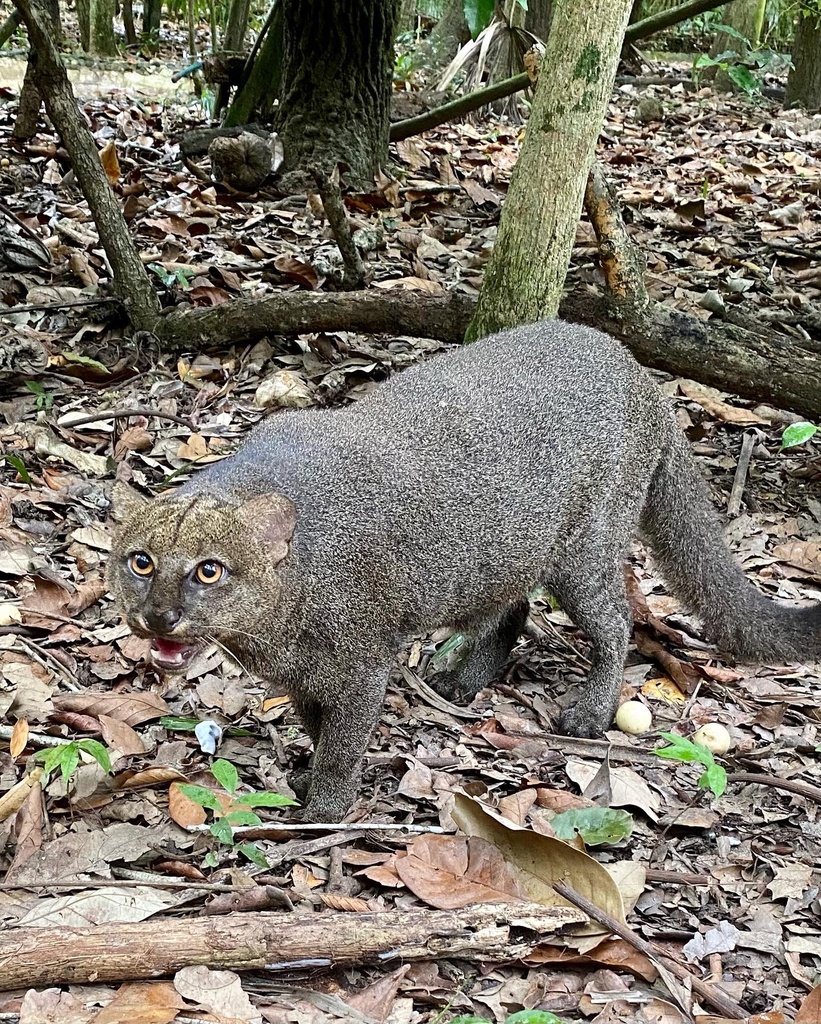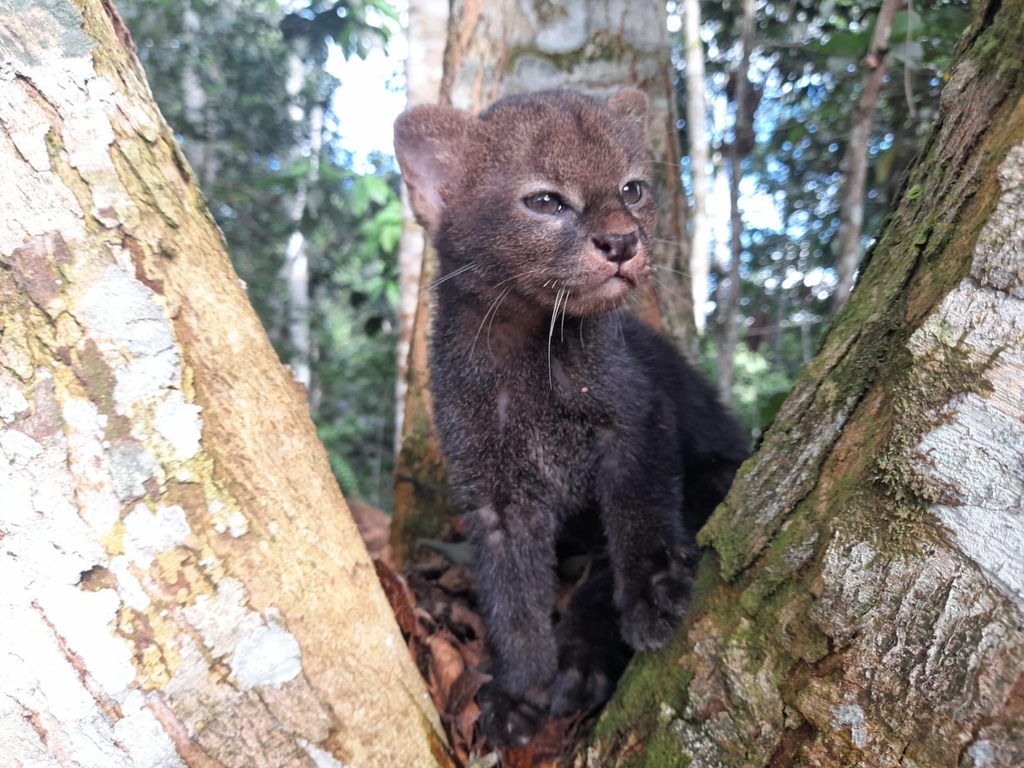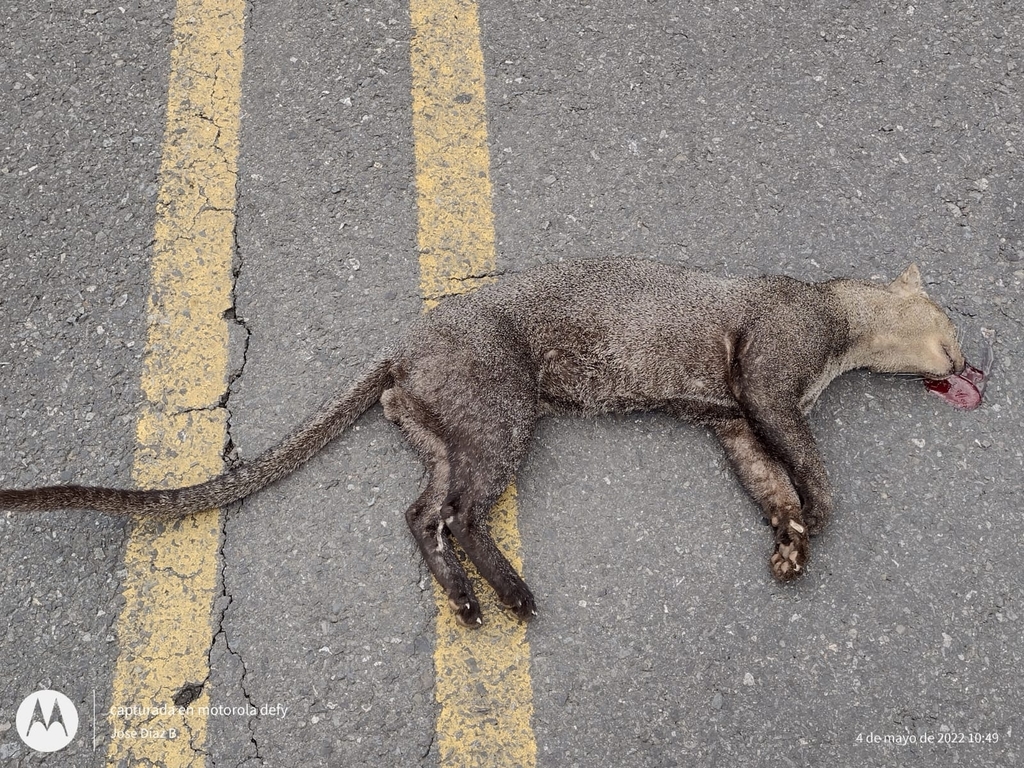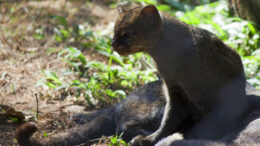A few times a year, wildlife officials in Texas receive excited phone calls.
“I just saw something that looks like a really big cat, or maybe a giant weasel,” a caller might say. “Was it a jaguarundi?”
 No, they’re not reporting a sighting of a mythical beast like the chupacabra. But they might as well be.
No, they’re not reporting a sighting of a mythical beast like the chupacabra. But they might as well be.
The elusive, secretive jaguarundi (Herpailurus yagouaroundi) is a small, bizarre-looking feline species, not much bigger than a house cat, with weasel-like features, short legs, and an extremely long tail. Native to South and Central America, its range once extended to the southern tip of Texas, but it hasn’t been officially observed in the Lone Star State since 1986. The last one we know of was killed that year by the world’s most fearsome predator: a car.
Texas wildlife officials still dutifully investigate every sighting, and to date they’ve debunked every one of them. The “jaguarundis” people think they saw, biologists explain, were simply house cats or other wild felids — or sometimes just squirrels — out stalking in the dark.
That hasn’t stopped people stopped looking for the jaguarundi in Texas or hoping to spot one. In fact, one group of scientists just finished an exhaustive, decades-long study seeking evidence of the species’ persistence at the northernmost edges of its range, which also extends south all the way to Argentina.

The researchers, mostly from the Caesar Kleberg Wildlife Research Institute at Texas A&M University, spent 18 years setting up motion-activated cameras at 685 sites in the cats’ most likely locations in their historic range in northern Mexico and southern Texas. Over that time, they captured 126 photos of the cats in Tamaulipas, the Mexican state bordering southernmost Texas, indicating that remains a healthy part of the animals’ range.
In Texas the camera traps caught images of a wide range of other carnivores, including ocelots, bobcats, coyotes and hog-nosed skunks — but not a single jaguarundi in 18 years.
Based on their thousands of photos and the lack of verifiable sightings, the researchers concluded that “the jaguarundi is likely extirpated from the United States.” They published their findings earlier this year in the journal Ecology and Evolution.
“This is unfortunate news for jaguarundis in the U.S.,” says Wai-Ming Wong, director of the small-cats program at Panthera, the global wild cat conservation organization, who was not involved in the study.
“Although disappointed, I’m not overly surprised by the findings,” Wong adds. “Southern Texas represented the northernmost part of the jaguarundi distribution, and for many cases, it’s at these extreme marginal areas of species’ distributions where they are most sensitive to threats.” Aside from highways, agricultural expansion and intensification likely drove the jaguarundi extinct in this country.
Time to Bring Them Back?
Could this sad news also serve as an opportunity?
The U.S. Fish and Wildlife Service formally protected the Gulf Coast jaguarundi under the Endangered Species Act in 1976, just three years after the legislation took effect. It’s been listed as an endangered species in this country ever since, although not much has happened during the ensuing years. By the time the Service finally published its first draft jaguarundi recovery plan in 2012 — a not-atypical delay — no one had officially seen the species in the United States in more than a quarter-century.
That recovery plan, finalized in December 2013, made it clear how little we knew about jaguarundi at the time — something that’s still true today. “Information on life history aspects of jaguarundi in the wild, including age of sexual maturity, minimum and maximum breeding age, and mating behavior, is limited,” the recovery plan stated.

That’s not unusual, since big cats like lions and tigers attract the most conservation attention and research funding. “Jaguarundis, like many other small cat species, are understudied and poorly known,” says Wong. Without the right data on a species’ ecology, it’s much harder to conserve them.
The 2013 plan called for closing those information gaps, as well as investigating whether jaguarundis could resettle Texas from Mexico or if the species would benefit from proactive reintroduction efforts.
The new study says it’s time to put that last option into action.
“We suggest,” the authors wrote, “that federal and state agencies follow recovery strategies as outlined in the Gulf Coast jaguarundi recovery plan. These recovery efforts include restoring, protecting and reconnecting habitat, public outreach and education, reducing risk of road mortality, and evaluating the feasibility of jaguarundi reintroduction into South Texas.”
That probably requires rethinking of the border wall between the United States and Mexico. The 2013 recovery plan acknowledged that “increased border monitoring associated with illegal immigration, and homeland security, may impact future jaguarundi recovery efforts” — and that was long before the Trump administration waived dozens of environmental laws to accelerate border-wall construction.
Wong agrees that reintroduction needs further discussion, “particularly in the context of the jaguarundi action plans as well as the U.S. Recovering America’s Wildlife Act,” he says. “The authors make strong recommendations for the next steps. It’s crucial to implement spatial and population surveys to better understand their fundamental ecology and conservation needs, which would inform reintroduction plans and make them more effective.”
Federal officials disagree, though.
“Given our limited resources, the U.S. Fish and Wildlife Service works to focus recovery efforts where we can have the greatest impact for listed species,” Fish and Wildlife public affairs specialist Aubry Buzek says by email. “At this time, we do not have plans to implement a reintroduction of jaguarundi into the United States.”
More Effort Needed
Nonetheless, the species remains officially endangered in the United States — an important classification should the wild cats wander back into their traditional northern territory.
It’s not an unlikely scenario. Their larger, similarly named cousin, the jaguar, has extended its range back into the United States in recent years, a trend that’s expected to continue.
Meanwhile, the threats that likely drove the jaguarundi out of the country still exist, and they’re probably worse than they were 30 years ago. Those risks need mitigation, not just for jaguarundi but all Texas wildlife.
Road mortality, habitat loss, roads and hunting remain threats to jaguarundis south of the border, too. Although the IUCN Red List assesses the species’ extinction risk as “least concern,” they’re not always doing well, and their legal protection varies throughout their range. “In many parts of their distribution, their populations are declining,” says Wong.

But knowing how much they’re declining, and what they need to thrive, remains under-researched. Fewer than 20 scientific studies of the jaguarundi have been published since 2018. During that same period, researchers have published hundreds of studies about lions and other charismatic mega-felines.
Ultimately, that’s what makes this study of the jaguarundi’s potential extirpation from Texas so important. It’s a reminder that we’re leaving many interesting species unstudied and under-protected.
Wong says he hopes this makes a difference for the mysterious, neglected jaguarundi.
“Any information that increases the conservation awareness of the species will be beneficial,” he says.
Meanwhile people in Texas keep reporting potential jaguarundi sightings. Maybe one day soon they’ll spy the real thing.
Get more from The Revelator. Subscribe to our newsletter, or follow us on Facebook and Twitter.
Previously in The Revelator:
The Final Frontiers? A Call to Protect the Biodiversity on the Borders


